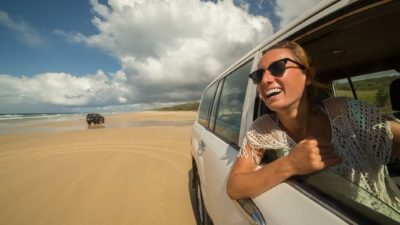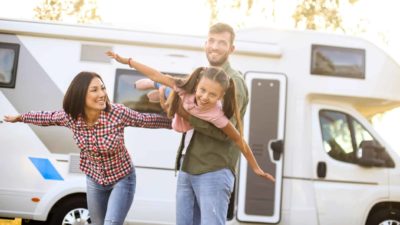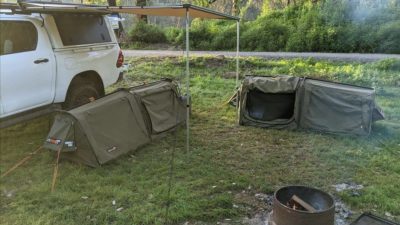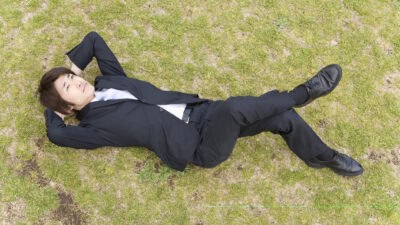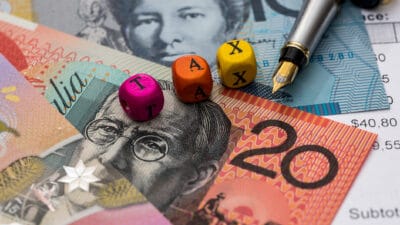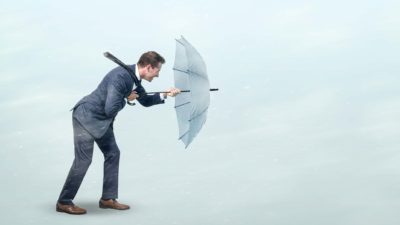This is something of a different article from The Motley Fool.
There's no market commentary. No stock tips. No lessons on temperament or investment analysis. It's just the story of my trek along the Kokoda Trail.
If that's not your thing, we'll be back soon with our regular programming. If it is, read on…
Scott.
———
How the Kokoda Trail almost killed me… and why I'd do it all again
It didn't exactly end the way I expected.
I finished… walked every bloody step of the aptly nicknamed 'bloody track', but the last hill was really hard.
'Jesus, that last hill was tough', I said to my mate Simon just after we walked through the archway that marked the end of the 120km, eight-day trek.
'No mate, that was easy' he said. And I realised how crook I was.
Fair to say, that night was tough, and I felt like death warmed up when I woke the next day for my flight home. Fast forward a few days, and I was in an intensive care bed back in Australia.
But we'll get there.
It was in June of 2018 that Simon and I decided to do the trek. I was reading Peter FitzSimons' book The Great Aussie Bloke Slimdown, because, well, I needed to slim down, and he mentioned the time he trekked Kokoda.
I can't remember if I called or texted him, but it went something like "Hey mate… let's do Kokoda". His immediate reply was "Let's do it" and it was on. All that was required was clearing it with our wives and choosing a date… all of which happened frighteningly quickly. Then the deposit was paid and we were committed.
Bloody hell… what had I done?
The good news was that the triple motivation of the self-evident need to drop some beef, the book, and the looming spectre of the trek worked their wonders, and I lost 25kg in the following four or so months. I got fit — fitter than I'd been in years — and felt like I was ready for the trek.
We spent a small fortune on gear (worth every cent) including everything from cups and spoons through to sleeping bags, packs and a first aid kit. Plus hiking poles, gaiters, water purification tablets and about 37 other things. Thankfully, the kit list provided by the tour operator, Adventure Kokoda, was thorough, because it was the first time I'd done a trek like that.
And my young bloke works in a hiking shop, so he was invaluable when it came to getting the right gear. (As an aside, apparently the month we bought our gear was the best sales month his store had ever had. I like to think it's a coincidence, but I'm pretty sure our spending made the difference!)
Then it was time for the immunisations. "I'm left-handed," I told the doctor, so he could use my right arm for the jabs, and it wouldn't impact my dominant hand. "You're getting four injections," he told me, matter-of-factly, "so it'll be two in each arm". Perhaps it should have been a warning for what was to come.
Before I go any further, I should also tell you that while Simon and I aren't irresponsible, we're generally game for most things, and tend to be optimistic. Our wives might choose the 'irresponsible' side of that particular description. On a whim, he sent me a t-shirt with 'What could possibly go wrong' printed on the front. We would go on to find out…
So there we were, all packed, kitted out, and up at 4am as we set out for the airport. Apparently, the blokes at the hiking shop have a phrase for people in our position, who've bought everything, but haven't been on a hike before: 'all gear, no idea'. It was apt.
Arriving in Papua New Guinea is an experience. Not only do you get hit with the obligatory heat and humidity upon disembarking the plane, but the drive from the airport is an eye-opener. Make no mistake, PNG is an incredibly poor country. Seeing it, so soon after hearing about the Maseratis that had been purchased by the local government to ferry APEC leaders around, really highlighted just how right people were to be disgusted with that administration.
The poverty is obvious, particularly in the city, and both unemployment and infant mortality are disgracefully high. I don't know the answer, but PNG is in desperate need of improvement, for the sake of its people. The risk — real or perceived — of crime is so high that each property is its own compound, with high fences and gates topped with barbed wire, and it was into such a compound that we drove, and which was to be the base from which we departed for the trek.
One of the highlights was to follow the next day. You can walk the Kokoda Trail ('trail', not 'track' – might sound like an Americanised name, but it's the preferred name of the locals, and how our Diggers referred to it during the Second World War) in either direction. Our Diggers trekked from Ower's Corner (just out of Port Moresby) to Kokoda, then withdrew back almost all the way, before pushing back to — and past — Kokoda as they defeated the Japanese.
We trekked from Kokoda to Ower's, meaning we started with a flight into the heart of PNG on a 20-odd seater plane. It was both beautiful and daunting — there's nothing quite like flying over the seemingly endless mountains that you know you'll have to then cross on your return to the starting point!
We landed at the Kokoda airstrip, then watched the plane taxi back and take off on its return flight to Port Moresby. "I guess it's too late to change our mind" I ventured, and laughed, just a little nervously.
Our party was seven trekkers, our trek leader, and about 16 PNG locals who were our porters, cooks and local experts. I say 'about 16' because the number fluctuated as we walked, with some joining and leaving the trek at the different villages along the trail.
Day one was gentle enough. We visited the war museum at Kokoda, and saw the battle site there; largely unchanged since the war, but for some regrown vegetation. The walk to our first campsite was only a couple of hours, and the ground was flat.
"This isn't too bad", I thought. Only later did we realise it was a soft day to let us acclimatise, so the trek leader could assess us, and to iron out any problems with gear.
From Day 2, for almost all of the rest of the 8-day trek, we'd be walking 8 – 12 hours a day. The pattern became pretty similar. Each day started with a hill climb, usually between 45 minutes and an hour, but sometimes longer. The same pattern would repeat after lunch.
"We'll start with a climb…" was the common refrain from our trek leader, Bernie Rowell, a very good man who has done 50-odd treks up and down the trail, and who clearly loves it. As time went on, we'd expect it, and all smile ruefully as he said it. Then, up we'd go.
Experienced trekkers would know this, but we came to, if not actually enjoy going uphill, at least preferring it to going down. Heading downhill is hard on the body and the mind as your legs absorb the impact of holding your bodyweight as you descend, and you concentrate hard to make sure you're not going to slip, trip and/or fall as you go. Going uphill, by contrast, hurt the lungs and the legs, but was far preferable. Call that another thing I learned on the trek.
We visited battle site after battle site, recalling some of the toughest fighting Australian soldiers have ever been engaged in. Always outnumbered, but never daunted, they continued to engage and be engaged by the Japanese. Endless acts of bravery, often leading to death, were recounted at places that would become immortalised in Australian history.
Isurava. Brigade Hill. Kokoda. Myola. Efogi. These are villages along the Trail and names that all Australians should know. It was deeply moving to be at those places, and to reflect on the courage, bravery and sacrifice of the men who fought in our name. And the Fuzzy Wuzzy Angels who selflessly carried food, supplies and, too often, injured and dying Australian soldiers. Without them, the death toll would have been far, far higher.
It winds its way through villages of largely subsistence people. Kind, shy villagers, on the whole, who, save for a little (very little) aid money and small amounts of new infrastructure, have lived a similar way of life for centuries. It was a privilege to be able to walk the trail and meet some of these people, as well as staying in and near their villages.
And the Trail itself is essentially the same as it's been for centuries — it's what the locals have always used, and still use, to move between villages and all the way to Port Moresby. In some parts six feet wide, and at others almost invisible, depending on the location and vegetation, it traverses swamp, rainforest, bush and (very rarely) clearings. And multiple times each day I would be reminded that, no matter how tough it felt for us, we were quite literally walking in the footsteps of Australian soldiers who traversed exactly the same path some 75 years earlier.
Except our boys did it with heavy packs and rifles. With terrible maladies that included dysentery, malaria and scrub typhus. On starvation rations. Oh, and being harassed, shot at and fired upon with mountain artillery by a determined, highly trained and fanatically disciplined enemy.
It was, as you'd likely expect, the experience of a lifetime. There was something almost meditative about repeating the same process every day: up before dawn, dress, pack, eat… and walk. And walk. And walk. Then to bed, and the cycle repeats.
There is little to no mobile coverage, meaning little contact from, and with, the outside world. I missed my family, and couldn't wait to speak to them on my return to the city, but the forced isolation was good for the mind and soul.
And the body? Well, usually I'd say yes. But on the evening of our fourth day (of eight) I felt a sudden chill. I asked if anyone else was cold. They weren't, of course. PNG is hot during the day and warm at night. I realised, to my chagrin, that I was probably getting a cold.
I woke up on Day 5 feeling pretty ordinary. I had a couple of Panadol and started walking. Then, as soon as the directions on the packet would allow, I had some more. And repeated the process again, throughout that day. I had a terrible night's sleep, punctuated by sweating and coughing.
Day 6 was pretty tough. The longest, hardest climb of the trek and I was completely spent. Not really tired or really sore. But totally, completely spent. I did it tough. When we got to the village, it was all I could do to lay prostrate on the grass and try to recover. It was hard for the other boys too, but not that hard. I knew I was crook.
Eventually, a lot of fluid, a (very) cold shower and some cold & flu tablets had me upright and walking. Our trek leader, Bernie, distributed some of my gear to others to carry, to lighten my load. I felt guilty as hell but knew I needed the help.
That was to start a cycle of cold & flu tablets, panadol and nurofen, interspersed so I wasn't overdoing any one of them, but making sure I was regularly medicated, just to make it through the trip.
Sleep was short and usually punctuated by coughing. The poor bastards on the trek with me were close by — meaning my coughing was costing them sleep, too.
I didn't know what was wrong. We carried first aid supplies, thank goodness, and I was well looked after. Bernie checked in on me at each break, and the boys were great. True, I felt like I was the slacker of the group, that somehow I should have been able to just tough it out — to 'stay staunch'.
Not finishing the trek was never on the agenda, though. I was going to do it. I drew inspiration from the stories of the Diggers, who had it far worse than I did. From thinking about my family. From wanting to do it for myself.
And, I did. I never really contemplated being medically evacuated (by helicopter), but it would have been an option, had I been worse. And I have to say, based on the way I felt the day after the trek, I'm not sure I could have done a ninth day if we'd still been on the trail.
I got home on a Saturday afternoon. So, probably unwisely, I decided to wait until Monday to see my GP. He listened to my chest. "You've probably got a chest infection, or pneumonia", he said. "I'll send you for an x-ray and blood tests".
When we got the results the next day, he said something I don't know I'll ever forget: "That's a pretty bad pneumonia… I'm impressed you made it back alive".
He gave me some oral antibiotics, and I went home. But I kept getting worse. During the night, I could feel — between incessant coughs — that my breathing was getting worse. I didn't know how much worse I could afford to get, before I became a resuscitation case. I'm not generally a worrier, and tend to be closer to the "she'll be right" approach to healthcare, but I knew I had to do something.
On Wednesday, I took myself to the local district hospital. "Just relax and take deep breaths" the nurse said. I couldn't. The walk from the waiting room to the treatment room, and trying to explain what was wrong meant I was hopelessly out of breath. And I couldn't get enough air in.
Once I was admitted, the doctor and nursing staff on duty were amazing. Kind, thorough and fantastically professional, within a couple of hours I had two cannulas, an arterial line and a catheter in. They pumped me full of fluids and antibiotics, and did x-rays.
And organised for me to be transferred to a larger hospital. By ambulance. With lights and sirens. Straight to intensive care.
The intensive care doctor was wonderful. He could see I was concerned and reassured me that they'd look after me. "Just relax. We'll do what we need to do to get you better". The reassurance was welcome.
When the respiratory specialist came to see me, he was friendly and professional, but blunt. "You probably won't die", he said. Bloody hell, I thought, not for the first time. I hadn't contemplated dying, but it turns out it was a real, if unlikely, possibility.
He gave me a 70% chance of recovering without incident, a 20% chance that they'd need to take serious interventionist action, and… well, a 10% chance that I wouldn't be writing this today. Apparently, mine was one of the worst cases he'd seen, and my x-rays showed splotchy white clouds on all parts of my lungs.
On the scale of things that confront many people in life, it's not in the most serious category, of course. There are, unfortunately, many worse things to suffer from, with higher mortality rates. So I'm very aware how lucky I was. But it was a real wake-up call.
The medical staff were top notch: unfailingly professional and deeply caring. I was wonderfully looked after. I spent 5 days in a combination of intensive care and 'high dependency' which is one step down, then a couple of days on a regular ward.
After that, I was home, though recovery from pneumonia, especially a bad one, takes a couple of months. My last scan showed some lingering evidence of pneumonia. Hopefully the next one, in a couple of weeks, finally gives me the all clear.
Despite all of that, I'd do Kokoda again. The Adventure Kokoda team are wonderful. And I was just plain unlucky to get crook.
It is truly a wonderful experience. Trekking the trail is one part physical challenge and one part meditative retreat. But more than that, it's a pilgrimage — a chance to see and hear what Australian soldiers did in PNG during the Second World War, and to remember and pay my respects.
The dawn service at Isurava was one of the more emotional experiences of my life. Walking the trail and visiting the battlefield sites where so many young Australians died was almost surreal. And we visited Bomana War Cemetery, and read the ages of those who did not return, as well as the heartbreaking inscriptions on their headstones, chosen by their families who lost a son, brother, husband, or father.
It would be trite to try to wrap this up with some 'investing lessons' or to force some parallels with finance. It would be disrespectful to our servicemen.
Instead, I'll just leave you with some reflections.
I am grateful for the experience of challenging myself on the Kokoda Trail. I didn't intend to get sick (and for the record, the doctor never could find the bug that caused it all), but I'd do it all again.
I am grateful that I got to trek Kokoda with a great mate, and to have formed a bond of camaraderie with the rest of the group and our leader. Eight different people from different walks of life, who bonded over a shared experience. I can't help but feel there's a lesson there.
I am grateful for the wonderful public health system that took care of me — without having to pay a cent — when I was so crook, and to the wonderful doctors and nurses whose calling is taking care of the sick and dying. We take it for granted until we need it, but we are immensely fortunate.
I am grateful for the luck of being born in Australia, for a loving family, and for all of the opportunities that entails. I could have been born in a PNG village, or on the streets or Port Moresby, or anywhere else. Being born here truly is like winning what Warren Buffett calls the 'ovarian lottery'.
And I am grateful for the service and sacrifice of our men and women in uniform, both past, and present. They willingly put themselves in harm's way in our name, and many of them either didn't return, or came back, but always carried the mental, emotional and physical scars of their service. We will remember them.
Lest We Forget.

Scott Phillips
Chief Investment Officer
Motley Fool Australia

